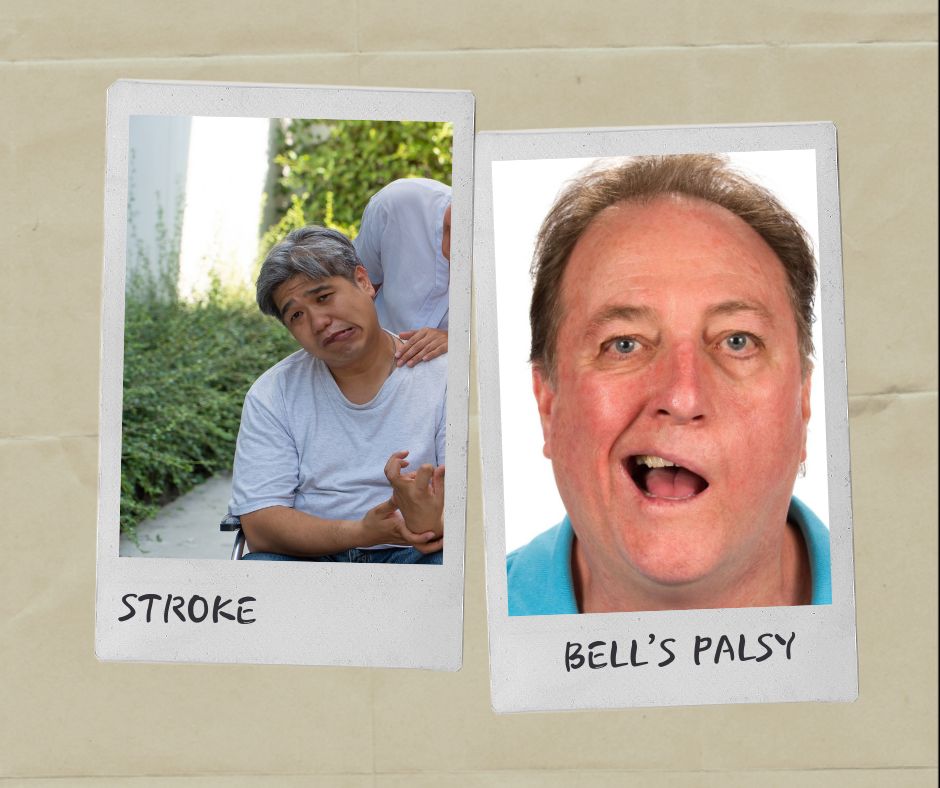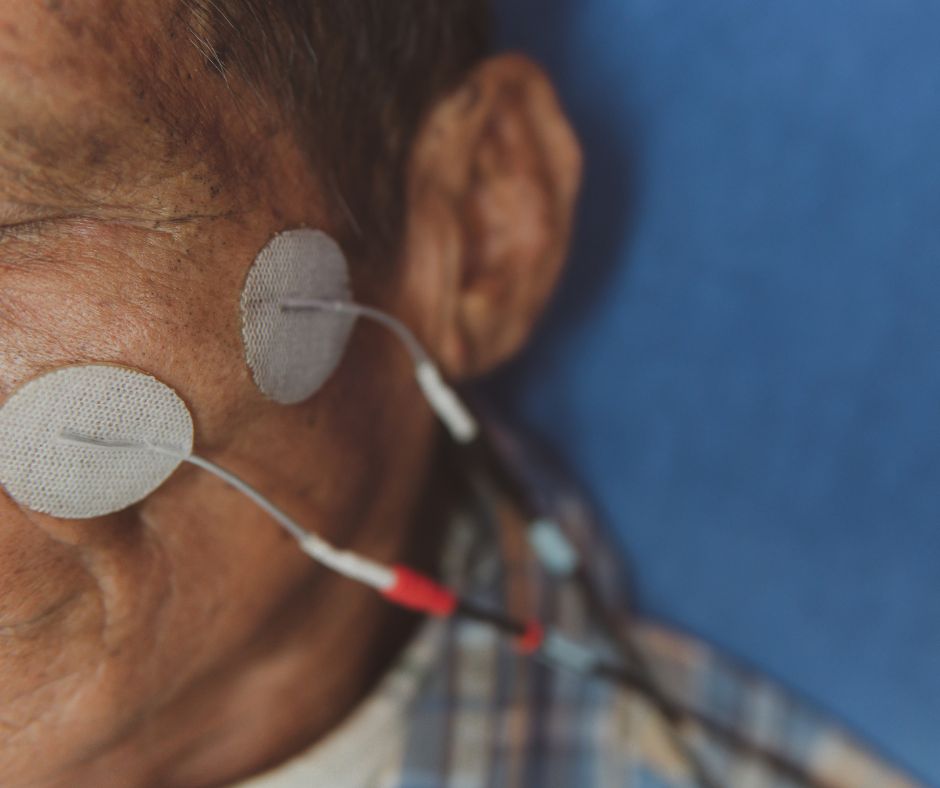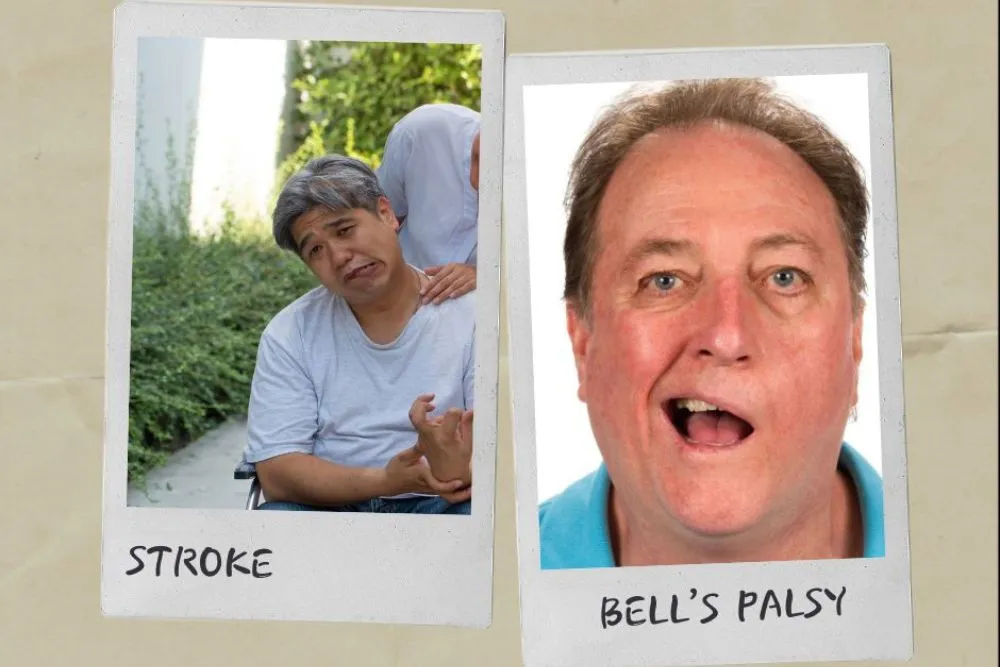When facial paralysis strikes suddenly, people get confused whether it is Bell’s Palsy or Stroke. They often assume the worst – that it’s a Stroke! Facial paralysis can be a frightening experience. But not every case of facial paralysis indicates a Stroke. Bell’s palsy manifests suddenly as facial paralysis, which is why it is sometimes misdiagnosed as a Stroke.
This post will discuss how to identify whether it is Bell’s Palsy or Stroke, as well as provide a glimpse into the possible emotions of those who are impacted and treatment and preventative advice.
What is Bell’s Palsy?
Bell’s Palsy is a neurological disorder that affects face muscles, causing a sudden paralysis or weakness on one side of the face. The facial nerve, which regulates the muscles of face expression, is thought to become irritated or compressed when it happens. Bell’s palsy is frequently linked to viral infections, specifically the herpes simplex virus, however the precise cause of this inflammation is not always evident.
Bell’s palsy is distinguished by its abrupt onset. One may awaken one morning to find their face paralyzed or sagging.
Symptoms of Bell’s Palsy
Facial droop: When one side of the face droops, it might be challenging to smile or close one eye.
Loss of flavor: The front two thirds of the tongue may experience changes in taste perception.
Heightened sensitivity to noises: Some people may notice that sounds are more sensitive to one ear than the other.
Excessive tear production or dry eye: The afflicted eye may produce more tears than usual, and the eye may also become dry.
Drooping of the mouth: Drooling can be caused by a lack of control over facial muscles.
Difficulty eating and drinking: Weak muscles can make it difficult to chew and swallow.
Bell’s Palsy or Stroke: Difference
Although facial weakness is a common feature, there are some important distinctions that might help you identify whether it is Bell’s Palsy or Stroke:

| Aspect of Comparison | Bell’s Palsy | Stroke |
| Onset | Sudden onset, often overnight | Sudden or gradual onset |
| Additional Symptoms | Typically affects only the face | May involve limb weakness, slurred speech, confusion, and more |
| Facial Involvement | Affects the entire half of the face, including forehead and eyelids | Usually affects only the lower half of the face |
| Pain | May be associated with pain around the ear or jaw on the affected side | Facial weakness is usually painless |
| Eye Symptoms | May cause excessive tearing and difficulty closing the affected eye | Eye symptoms are less common |
| Sensation | Altered taste sensation on the front two-thirds of the tongue may occur | No specific changes in taste sensation |
| Other Neurological Symptoms | Not typically associated with other neurological symptoms | Often accompanied by other neurological deficits |
How to Avoid Bell’s Palsy and What to Do if You Get It
Bell’s palsy cannot always be avoided, but there are things you can do to lower your chance:
Control Stress: Stress impairs immunity, increasing vulnerability to viral infections that may result in Bell’s palsy. Engage in stress-reduction practices including yoga, meditation, and deep breathing.
Maintain Good Hygiene: Bell’s palsy is frequently brought on by viral infections, especially the herpes simplex virus. Maintaining proper hygiene, including washing your hands frequently, can help lower your chance of contracting viral infections.
Stay Healthy: Your strongest line of protection against Bell’s Palsy is a robust immune system. Maintaining a healthy immune system requires eating a balanced diet, getting regular exercise, and getting adequate sleep.
Refrain from Excessive Cold Exposure: Although there is a link between cold weather and Bell’s Palsy, it is crucial to understand that cold weather is not the cause of the ailment. However, you can lower your risk by avoiding extended cold exposure and covering your face while it’s cold outside.
Seek Quick Medical Attention: If you think you may have Bell’s Palsy, get help right away. The likelihood of a full recovery can be increased with early intervention.
The Function of Physiotherapy in the Management of Bell’s Palsy

In order for people with Bell’s palsy to recuperate, physiotherapy is essential. Benefits from a physiotherapist include the following:
Facial Exercises: To assist strengthen and retrain the afflicted muscles, physiotherapists can teach their patients specialized facial exercises. These workouts help enhance the symmetry and functionality of the face.
Manipulation and Massage: Light pressure applied to the injured area can increase blood flow, which promotes healing.
Electrical Stimulation: To assist strengthen and activate weakened facial muscles, some physiotherapy treatments may involve electrical stimulation.
Education and Support: Physiotherapists provide advice on how to take care of your eyes, how to wash your face, and how to manage your symptoms while you heal.
Support on an emotional level: Coping with Bell’s Palsy can be emotionally taxing. Physiotherapists are able to support patients emotionally and assist them in managing the psychological effects of their condition.
For Stroke patients, physiotherapy helps by providing rehabilitation techniques and exercises to improve mobility, regain strength, and enhance overall function after a stroke.
Bell’s palsy is a disorder that might resemble Stroke symptoms, which makes sense given the confusion and fear it causes. But being aware of the main distinctions between the two and being able to identify Bell’s Palsy symptoms can have a big impact on early diagnosis and treatment.
Hope this article has helped you identify if it is Bell’s Palsy or Stroke. It is crucial to know the difference and get the right treatment.
Note that although Bell’s palsy is frequently abrupt and shocking, it is usually not fatal. With appropriate medical attention, including physical therapy, the majority of people with Bell’s palsy can fully recover or see a notable improvement in their ability to use their facial muscles.
The best course of action is always prevention, so lower your risk by controlling stress, keeping up with hygiene, and leading a healthy lifestyle. See a doctor right away if you or someone you know has sudden facial weakness so that the cause can be identified and the proper course of action can be taken.
Don’t let the difference between Bell’s Palsy and a Stroke keep you or your loved ones from getting the care you need.
Be it Bell’s Palsy or Stroke. Act now and book a free consultation with us if you suspect these conditions.


